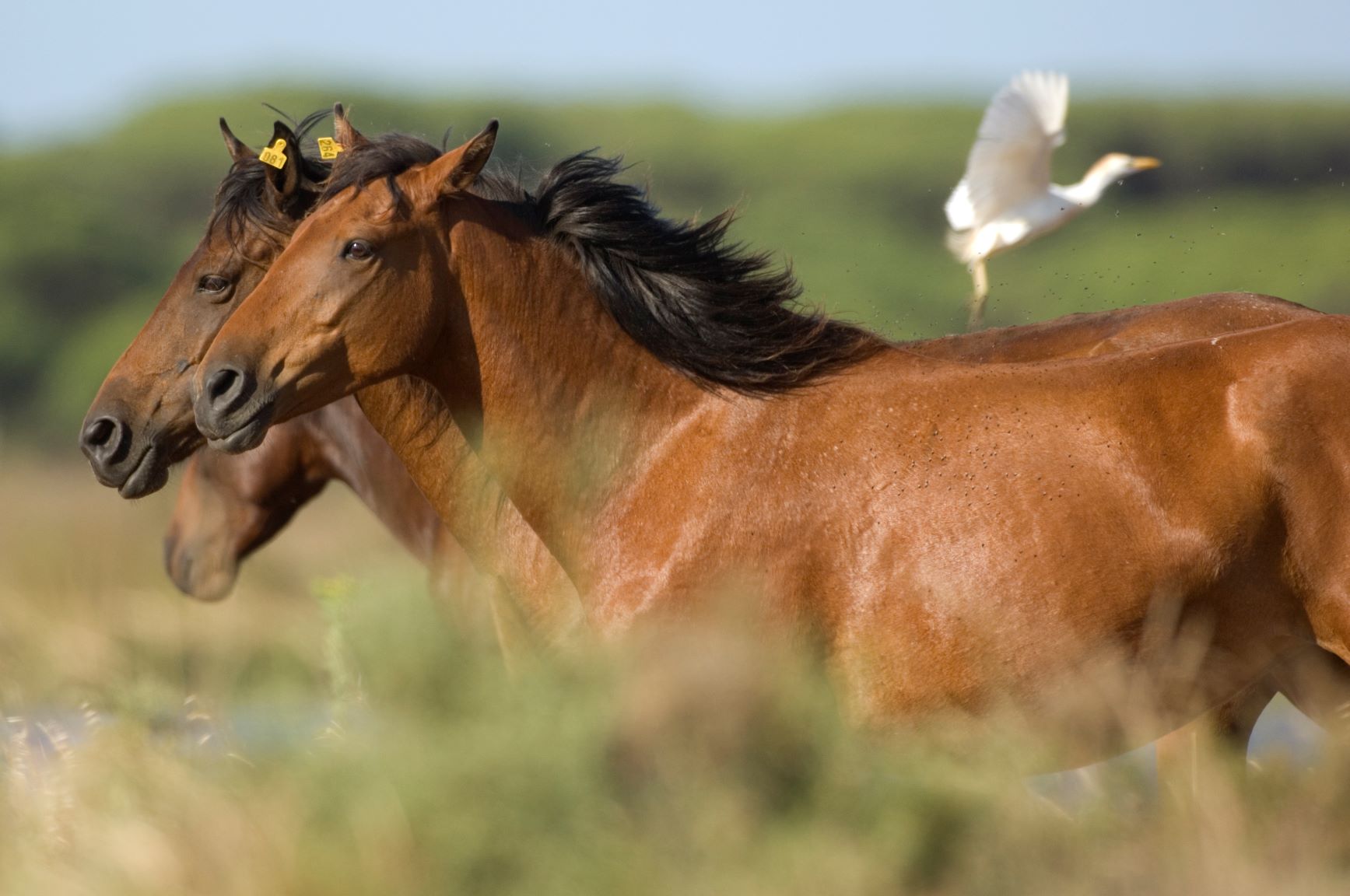The Retuerta horse is mainly located in the Doñana National Park, specifically in the Doñana Biological Reserve, and in the Guadiamar Reserve. It counts with an approximate population of 300 horses. This specimen was used in the past by the people of Doñana as a work animal and as a means of transport, but, nowadays, this animal lives in the wild. In 2003, the population was sampled and its genetic profile and genetic distances facing other breeds were established. The genetic distance tree showed that the Retuerta horses formed a group genetically isolated from the eleven tested breeds. In addition, it was found that 31 of the specimens with biochemical markers were carriers of an allele of the esterase, the "m" allele, which was never previously described in other breeds. Furthermore, it was found in the Retuerta horses in a large proportion another allele of the esterase gene, the "L" allele, which found in a few horses around the world. informacion[at]ebd.csic.es: Calderón & Vega-Pla (2020) El caballo de las Retuertas de Doñana. Pp 256-279 En González-Madrid, R (ed) Doñana y su entorno como Zona Patrimonial. ERA/UPO
https://rio.upo.es/xmlui/bitstream/handle/10433/8486/12.%20Calderon_VegaPla.pdf?sequence=5&isAllowed=y








 Las altas temperaturas están provocando que las lagunas y las marismas de Doñana pierdan agua rápidamente
Las altas temperaturas están provocando que las lagunas y las marismas de Doñana pierdan agua rápidamente



